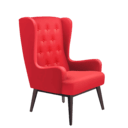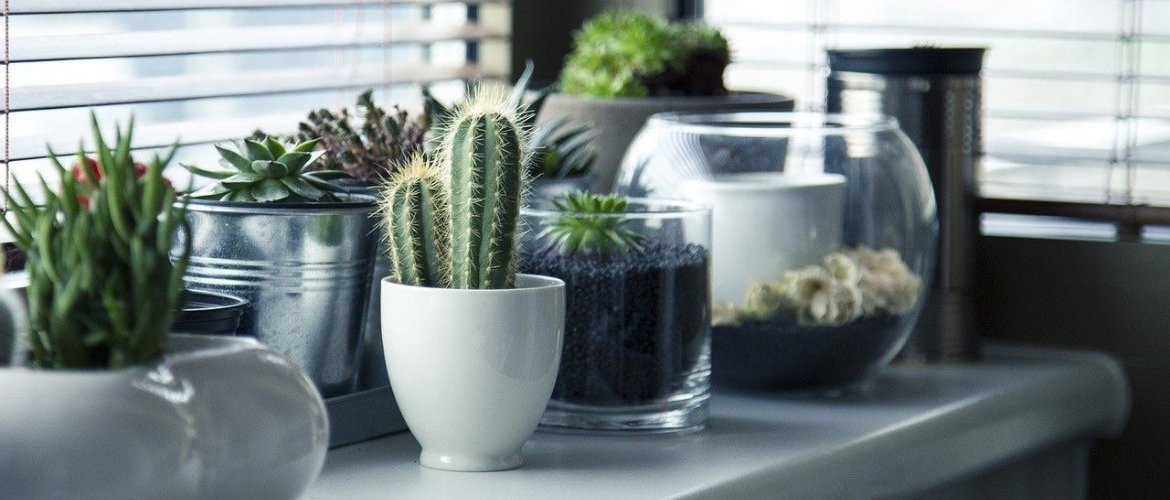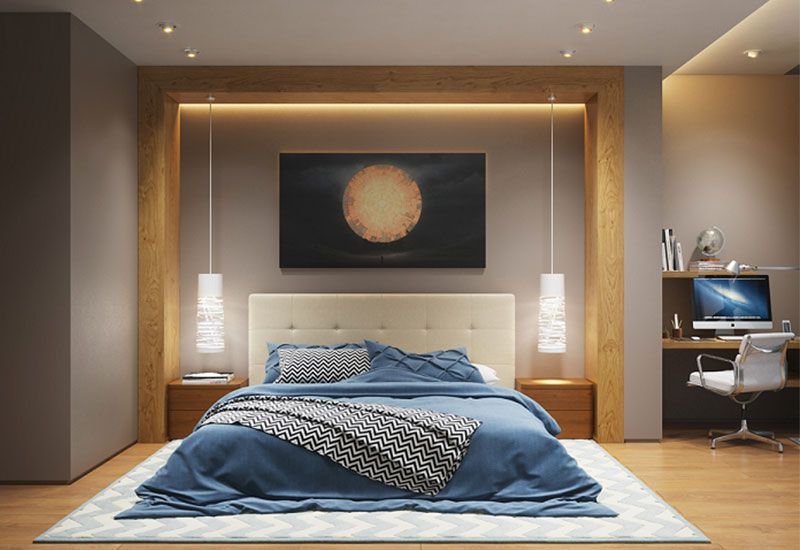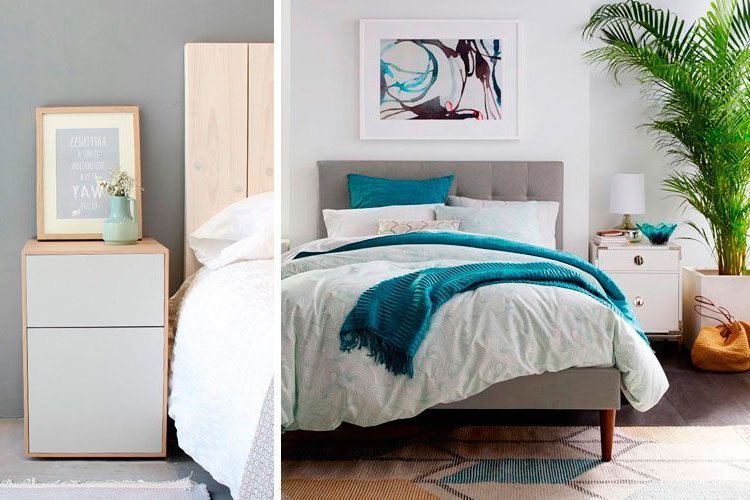Types of dining tables for the living room
When decorating the dining room there are several aspects to consider. One of them is the style, whether it is the renovated classic (ideal for elegant dining rooms), the rustic chic (for warmer environments) or a contemporary for a more zen dining room.
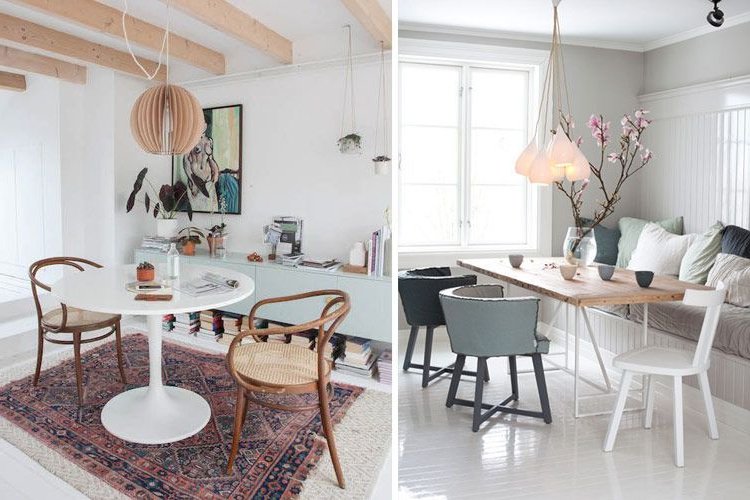
Another important factor is the seating, choosing for example different chairs to give it an original touch or opting for Scandinavian style pieces such as the Eames chair to achieve a dining room with a very modern design.
However, the most voluminous piece and the one that needs the most attention is the table. For this reason, today we will focus our attention on all types of dining tables: we will discover their formats and structure, checking how both influence the design and decoration of this room.
Form
The first factor to take into account when furnishing the dining room is the format of the table, which will be determined by the space and shape of our dining room. Depending on its dimensions, so should be the table (larger or smaller, rectangular or round, etc.).
If the space allows us several possibilities, then we can choose the table according to our tastes and habits at lunch or dinner time, which will influence the way we relate to the other diners (round tables, for example, facilitate more conversation among the whole group than rectangular tables, which lend themselves more to conversation among the closest diners).
In terms of shape, dining tables come in four main formats: square, round, rectangular and oval.
a) Squares
When we are looking for a touch of design, originality and novelty, one of the best options is to opt for a square table. Rarely does it go unnoticed by someone who sees it for the first time, the most common thing is that at first glance it is very much liked because it is rare to find it in the dining rooms of friends or family.
However, before buying it, we must consider whether it is suitable for our living room, since it must be large enough so that diners sitting in the corners do not end up bumping into each other with their legs as they are very close to each other.
In favor of it, as with round tables, it allows all the diners to be seen at a glance and therefore favors joint conversation among all of them.
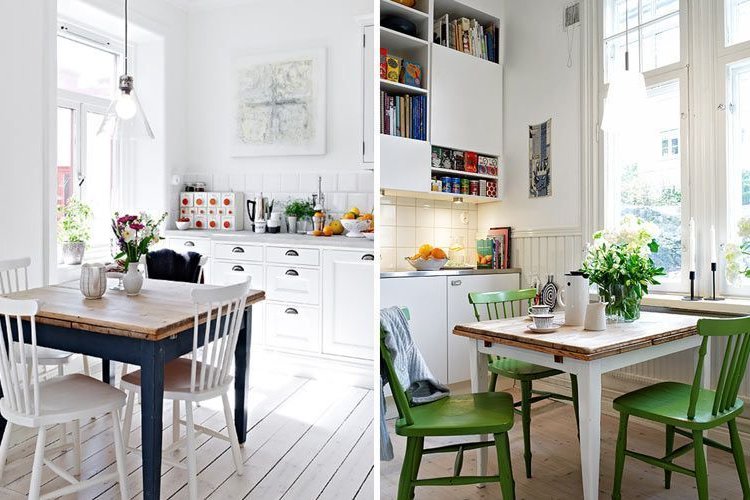
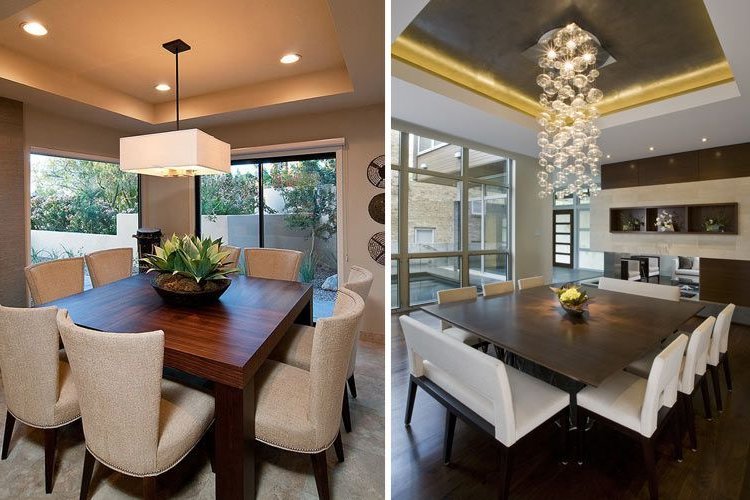
b) Round
As with the square ones, the round ones also promote communication between the people sitting at the table.
In addition, by being centered in the space to allow passage around them, it lends itself to being the center of attention in the room.
With a good ceiling lamp that makes it stand out and a centerpiece, it will be the queen of the room.
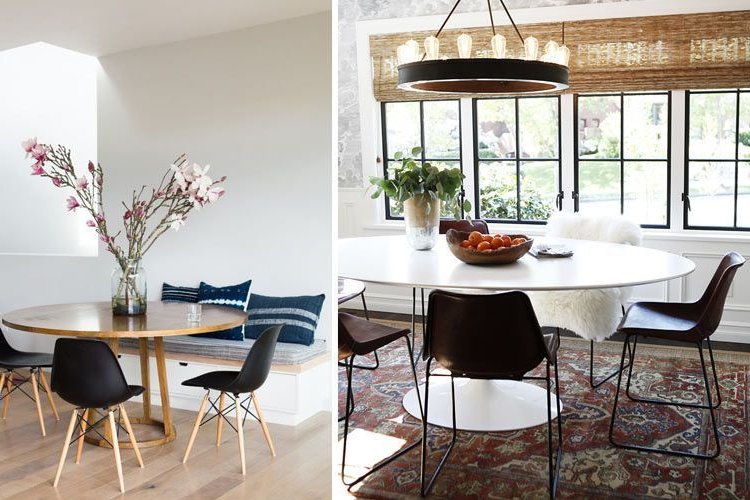
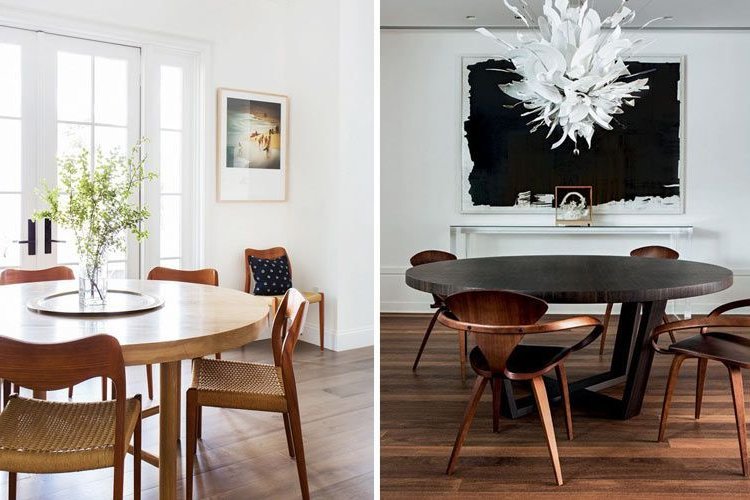
c) Rectangular
Rectangular tables are the most common in the decoration of the dining room. Because of the way houses are built, they are usually the most used because they adapt better than any other to the space. In addition, if the dining room has a spacious size, the table can acquire large dimensions to accommodate more than 10 diners.
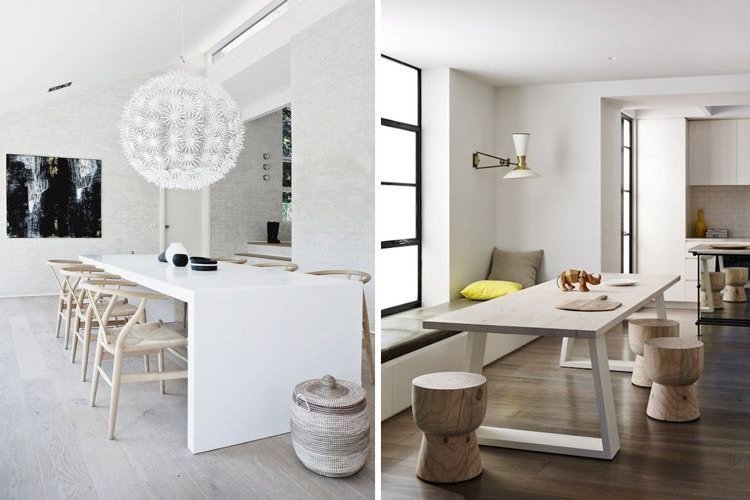
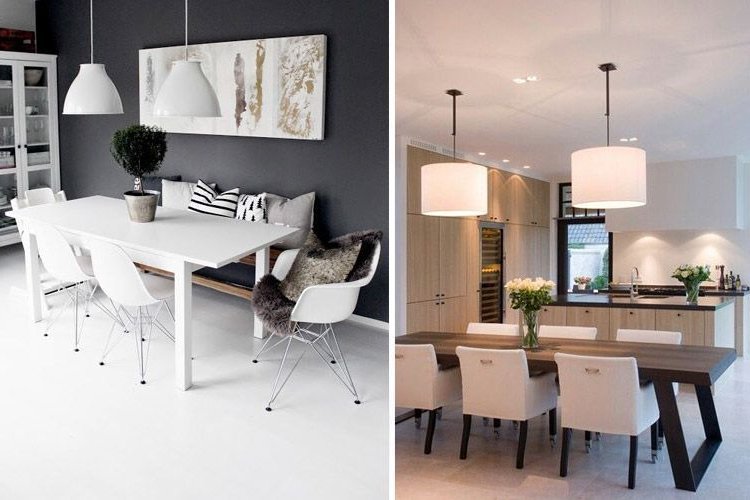
d) Oval
They combine the functionality of rectangular dining tables with the smooth lines of round tables, giving them a more organic feel. However, keep in mind that as you go to the extremes, there will be less space for the dishes and they will be somewhat more uncomfortable.
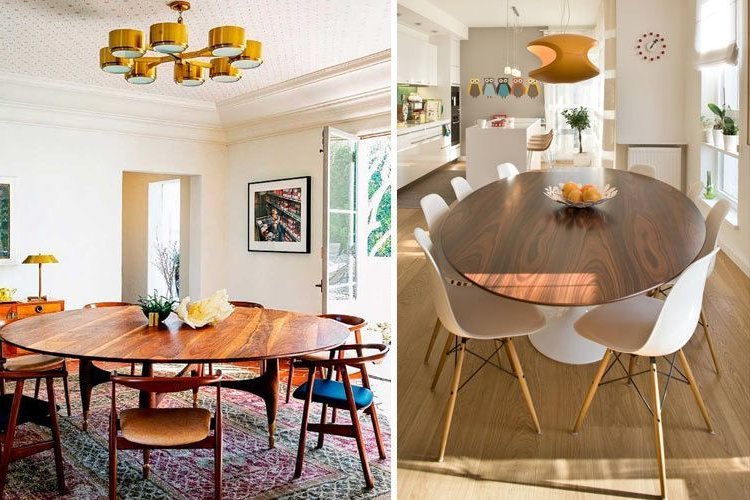
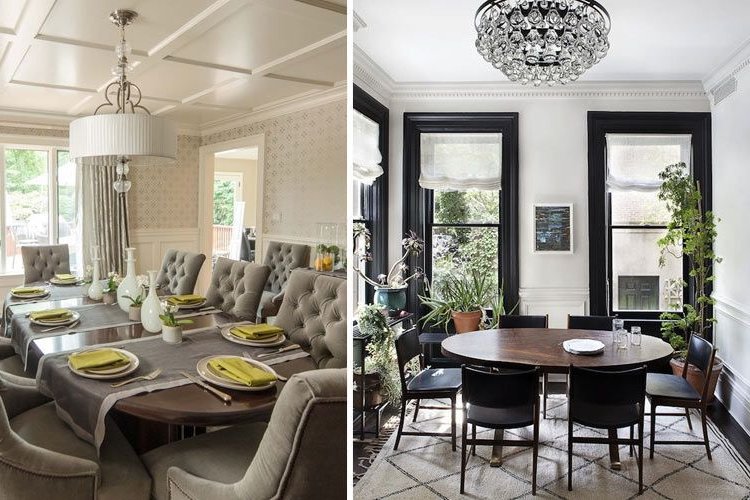
Fixed or Extendible
Fixed tables have the disadvantage of not being able to expand if we have many guests to eat, so it is essential to take into account the location of the legs, as they will condition us when taking advantage of the space, especially if we are a few seated at the table.
Fortunately, the world of extendable tables has made it easier for us to increase the number of diners in specific circumstances, without depriving us of that extra space on a daily basis. These tables allow us to open them when many guests come and close them when we only eat as a couple or small family to feel closer.
The opening system of extendable tables is a point to take into account, as it varies greatly depending on the shape of the table. Let's see the most common ones:
a) Radially extendable tables
The round tables are an unusual but very attractive option, leaving the leg in the center, simply enlarging the surface of the top.
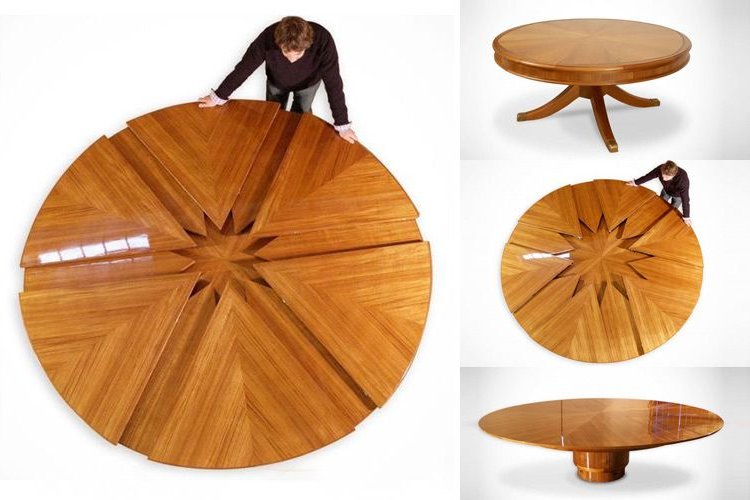
b) Tables with central extension
These tables are extended by dragging the ends and taking out of its interior the pieces that will complete the table, which sometimes come loose to be placed on the structure and in others have incorporated flexible systems that adapt to the extension hole.
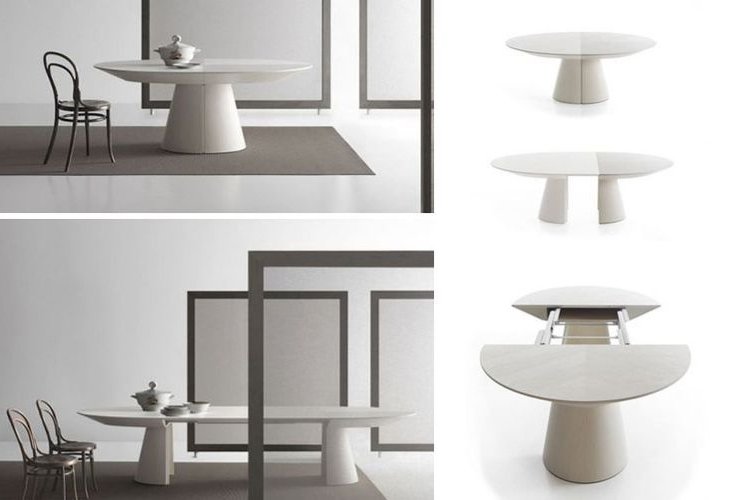
c) Tables with extension at the ends
This is a fairly common typology, although it can sometimes be less stable at the ends than the central extension, so it will be necessary to take care of the weight or the supports in these areas.
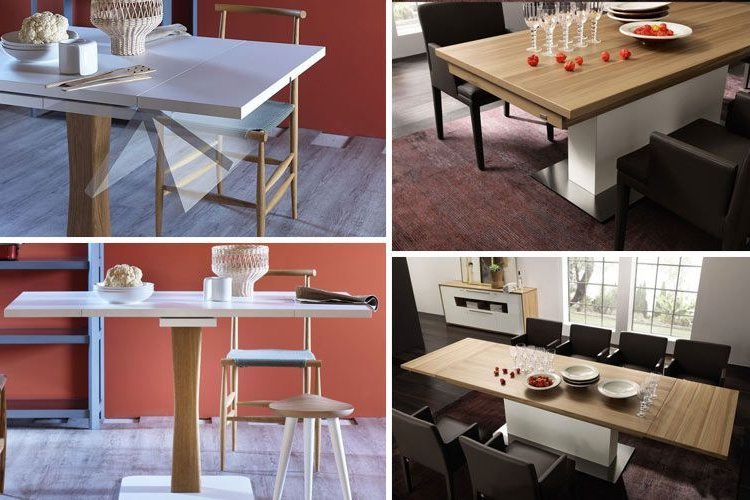
d) Extendable tables by rotation
Also typical of round or oval tables, they are an alternative version of end extension tables. Basically, they consist of extension pieces located underneath the table top that slide underneath the table through a twist until they are positioned at the height of the table top.
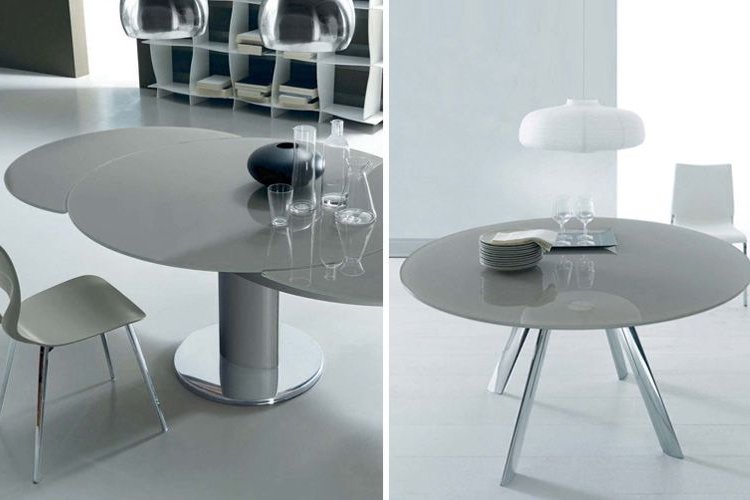
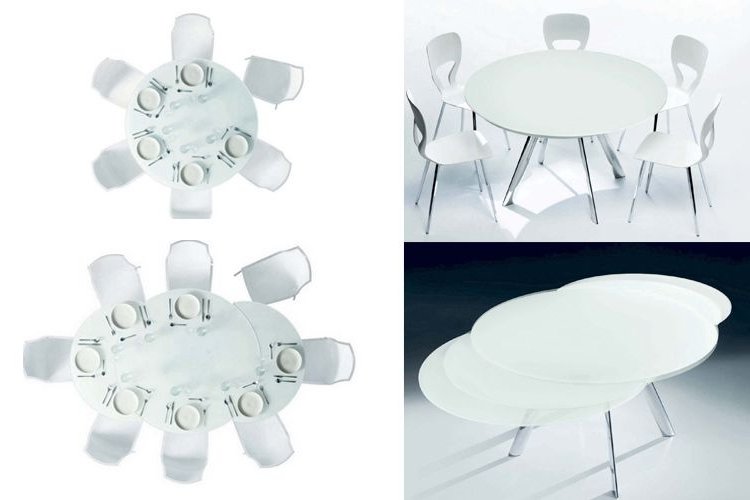
e) Extendable tables starting from a console table
Ideal for small spaces or apartments where the inhabitants do not eat at the dining table (but on a sofa, for example), these console tables save space most of the time, opening them only when they have guests. Interestingly, with this type of table the extension can be very long, reaching up to 2.40m on average.
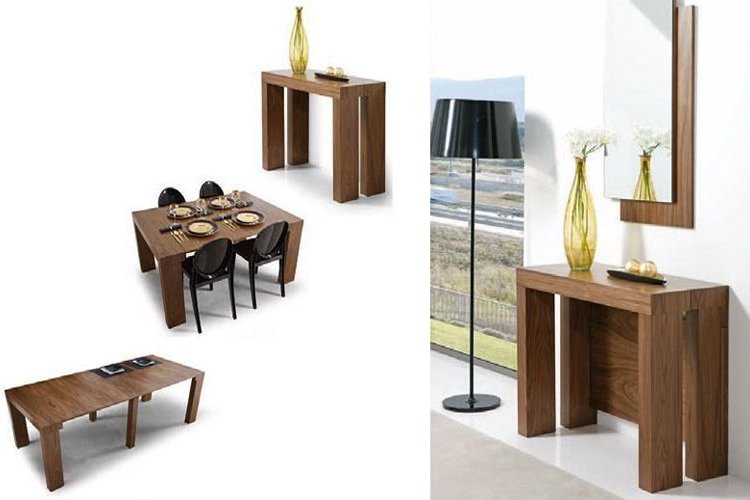
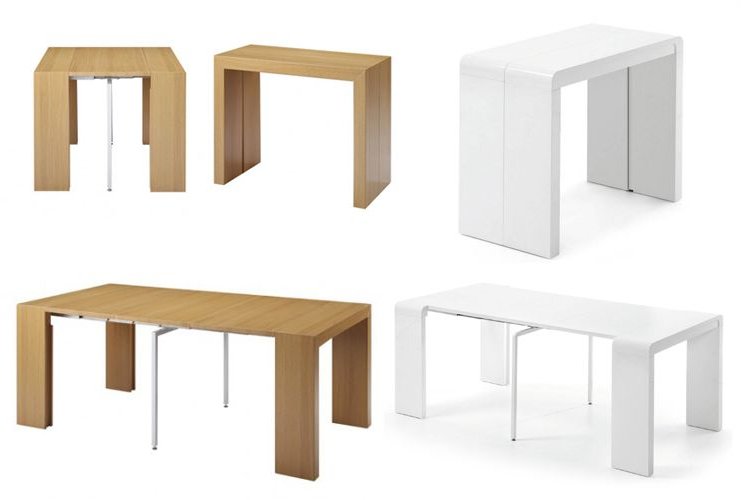
Support legs
No less important when furnishing the dining room is to decide what general line of design we want, and in this comes into play the type of support legs that best suits our decorative style. We will find very aesthetic but not very functional support systems, so we will have to pay attention to this matter, since we can spend a lot of time at the table and we must therefore consider its comfort and practical utility.
a) Central leg
This type of leg has the advantage of freeing the perimeter of the table, making it very comfortable for all diners, who do not bump into the structure. On the other hand, the leg has to be sturdy to withstand the weight of the table, which in the case of the dining room supports a lot of load at the ends. For this reason they usually come with a widened base that strengthens the support.
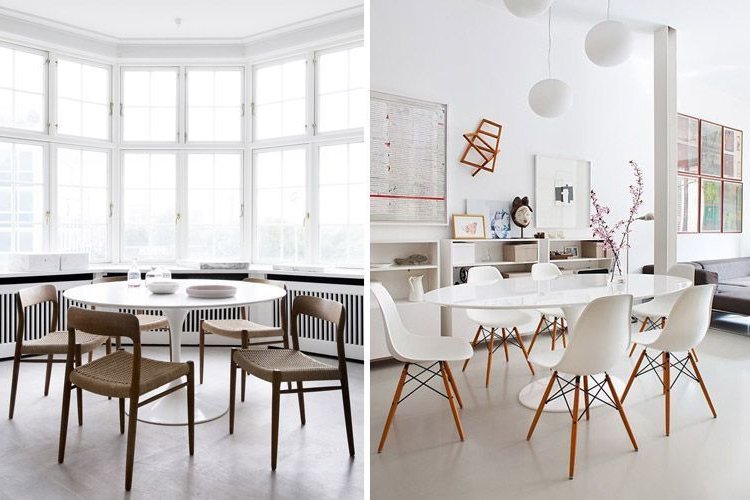
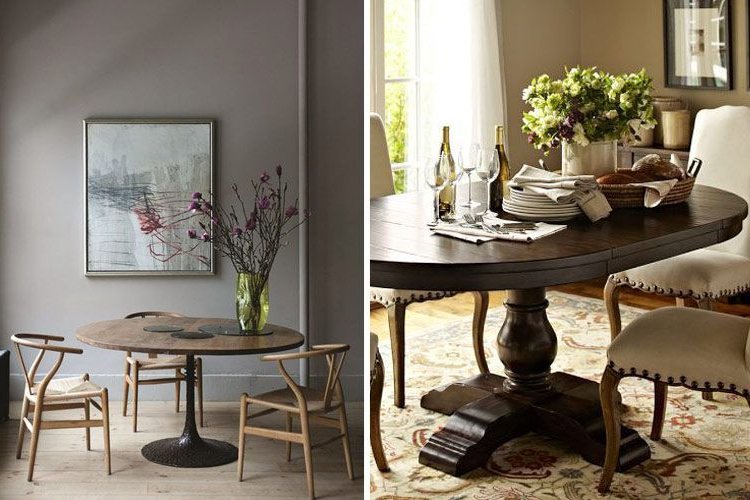
b) Legs at ends
This traditional support system is the most functional, especially when the legs are flush with the end of the table top, thus freeing all the space under the table to place the chairs. This system allows greater comfort for the diners as there is no intermediate obstacle for their movement, and it is also a very resistant option.
Only when the table is very long will it be necessary to reinforce it so that it does not sag, either with a metal structure under it or with an additional central leg.
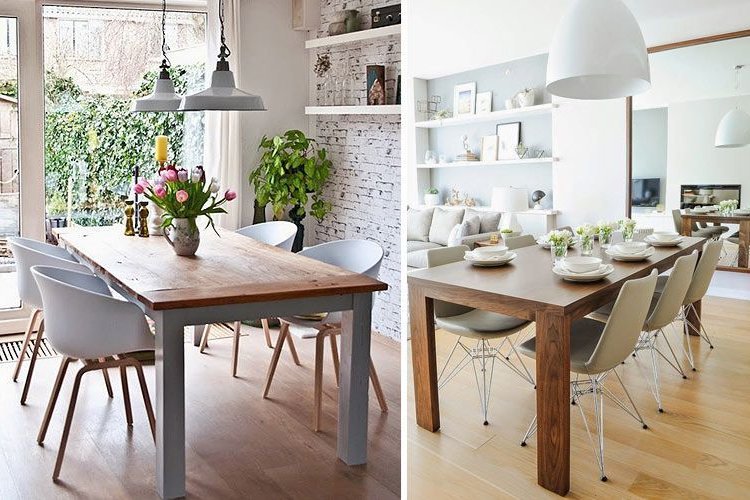
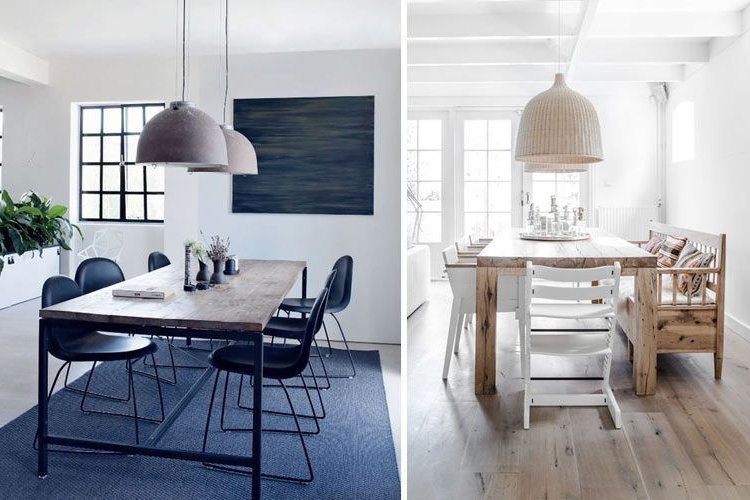
c) Recessed legs
Recessed legs offer a different vision of the table, much more architectural. Often we find sturdy legs that give it a solid appearance and also fits very well with styles such as Contemporary or even Rustic. The disadvantage is that they limit the space underneath, often forcing some diners to preside at the ends of the table.
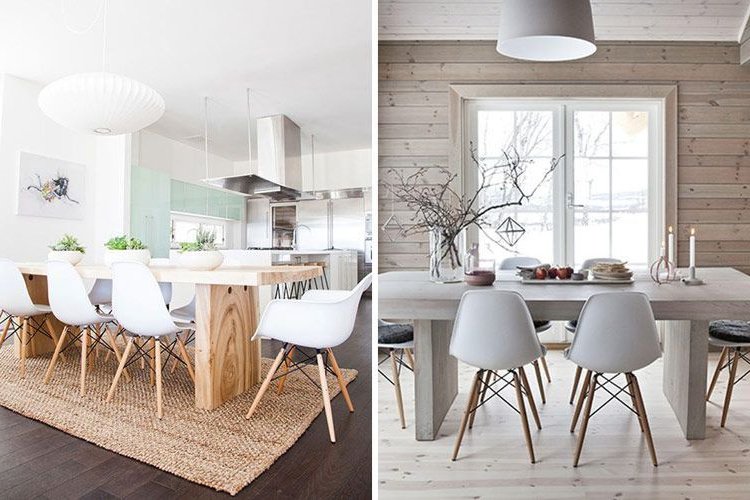
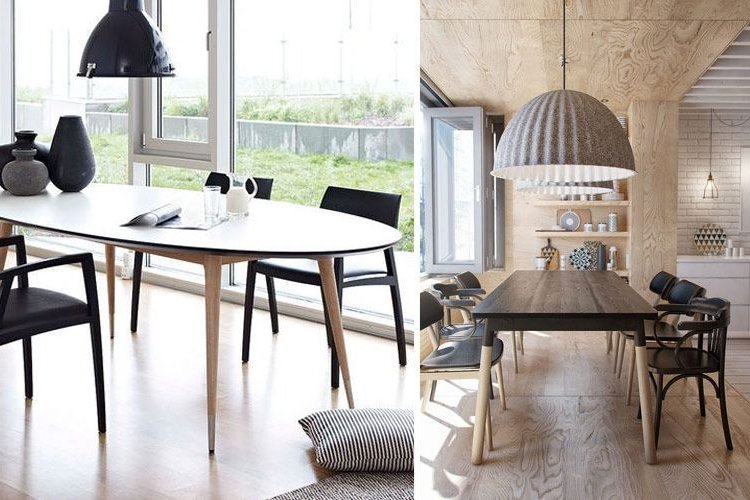
d) U-shaped side legs
The U-shaped side legs work strategically to make better use of the internal space under the table, as do the conventional flush legs at the ends, only adding an aesthetic plus that the latter do not have.
Its shape is created from a U-shaped profile that provides visual lightness without sacrificing a sturdy support. It is a good option if we want a contemporary style dining room with a certain touch of design.
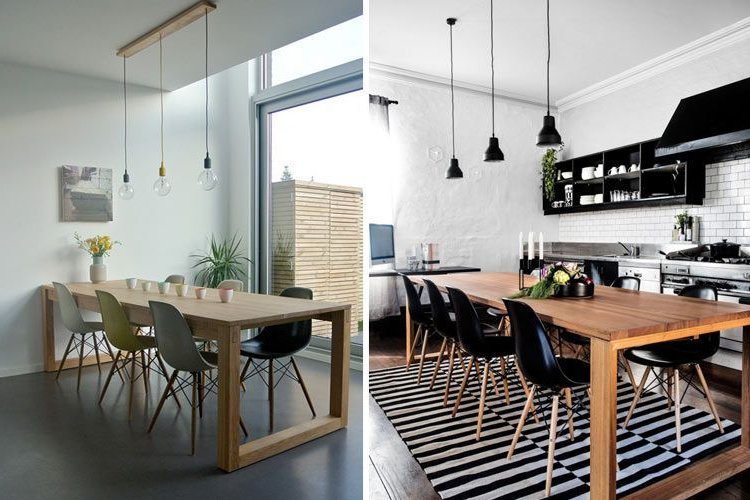
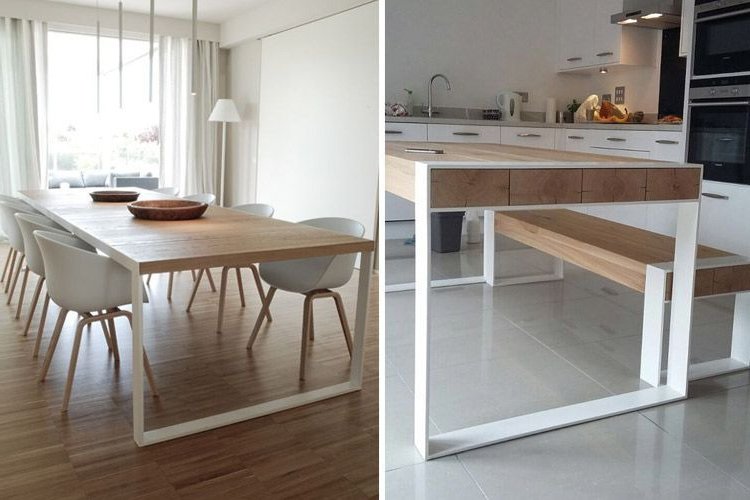
e) Trestle legs
Appreciated for their great beauty, trestle legs have many followers, especially in Scandinavian style lovers. The drawback is their impracticality. They are common in the workspace as a desk and some have a lower shelf that covers its structure and allows us some storage, but instead are often unsuitable as a dining table to significantly reduce the space to place the chairs and be uncomfortable for the legs.
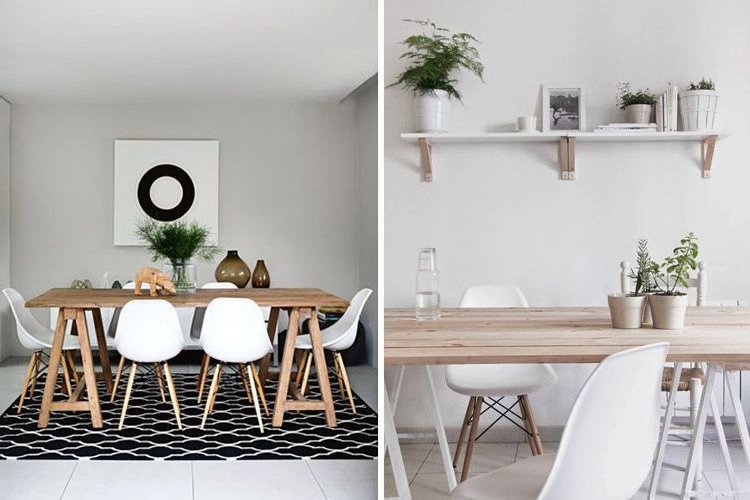
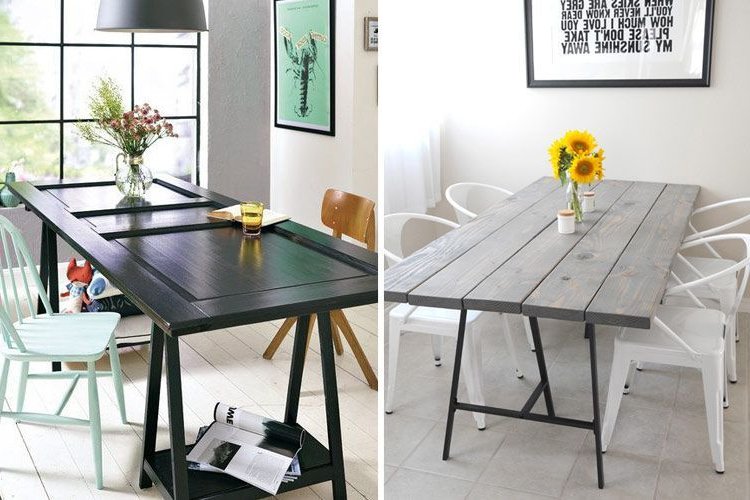
f) Crossed leg
The cross leg provides good stability to the surface of the dining table and, being placed at the ends, allows full mobility. Its design line is robust and therefore it is the queen of rustic or country Shabby Chic style.
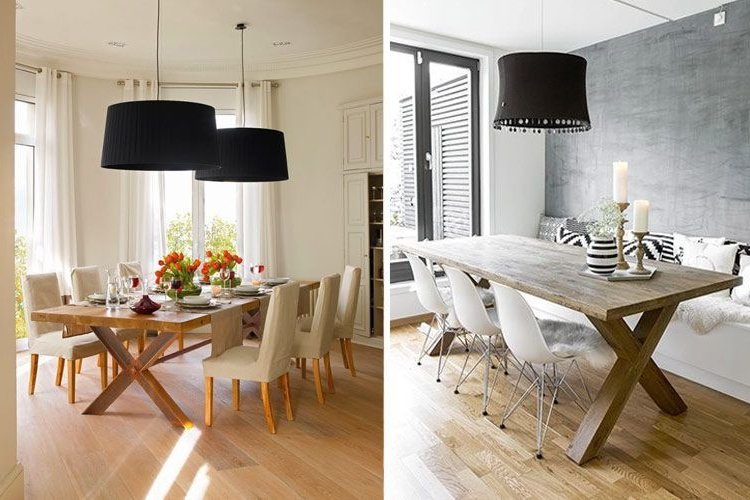
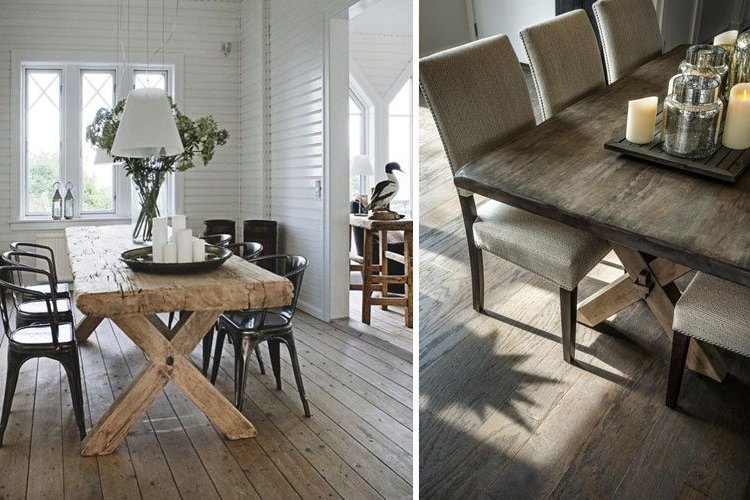
Once the shape and structure have been decided, the only thing left to do is to choose the material or finish that best suits our style.
We hope that with these small keys you have been able to decide more easily the type of dining table ideal for your space and as the French say... bon appétit!

